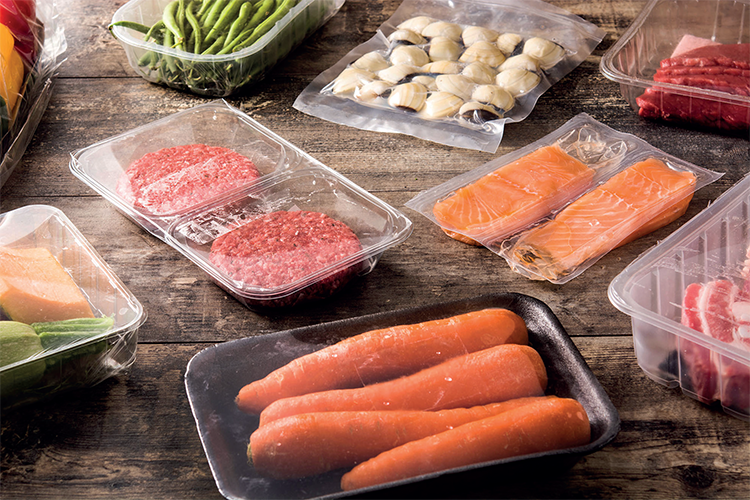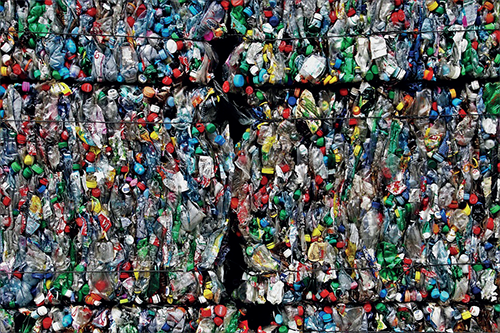
Is plastic past it?
Although plastics have received significant backlash and criticism in recent years due to their environmental impact, they play a vital role in food packaging. In fact, their versatility, strength and durability make finding a like-for-like alternative incredibly challenging. To develop sustainable food and beverage packaging without compromising performance, food manufacturers should turn to biodegradable and bio-based polymers. But how viable are these greener plastics? Ben Smye explores the issue.
The food industry is one of the sectors that benefited the most from the developments in plastics in the past century. Just as refrigeration revolutionized preservation of food for consumers, plastic packaging reshaped product possibilities and food distribution. Plastics provided an effective, mass-producible means of extending the shelf life of products by protecting them from oxidation, microbial growth and some damage during transportation.
To this day, thermoplastics are widely used for the majority of food and beverage packaging. This is due to their flexibility, impact resistance, lower molecular weight and, crucially, their ability to be recycled.
 However, being recyclable is not enough on its own. Since it has become apparent that plastic is often not being disposed of properly or the infrastructure is not in place to support recycling of all plastics, the need has arisen for other environmentally-friendly alternatives.
However, being recyclable is not enough on its own. Since it has become apparent that plastic is often not being disposed of properly or the infrastructure is not in place to support recycling of all plastics, the need has arisen for other environmentally-friendly alternatives.
Several materials such as paper, glass and aluminum have grown in popularity for food packaging in recent years. But as any design engineer knows, simply substituting one material for another is not straightforward – the properties of the original material and its replacement need to be taken into consideration. This has led many food packaging companies to instead consider biodegradable and compostable polymers, which can exhibit comparable properties to conventional plastics.
The degradation process that a polymer goes through helps to define whether it is biodegradable or compostable. In the case of the former, the polymer decomposes into carbon dioxide, water, inorganic compounds and biomasses in certain controlled environments, such as under high temperatures or when exposed to certain chemicals.
Compostable polymers, on the other hand, are defined much more closely. European standard EN13432 requires that any plastic that’s marked as ‘compostable’ needs to break down under industrial conditions – in temperatures of up to 60 degrees Celsius – in under 12 weeks.
Within these definitions, there are many biodegradable polymers that are proving themselves to be valuable in food packaging. Natural polymers such as cellulose can be used as films and fresh produce packaging; non-natural polymers like polyglycolide (PGA) can function as the protective layer in multi-layer packaging; and synthetic polymers, notably Polyhydroxyalkanoates (PHA), can be used in bottles and containers.
Where biodegradable and bio-based polymers have historically faced limitations, however, is in scalability and compatibility with existing processing methods. But the increased drive in green polymer innovation in recent years is helping to overcome these hurdles.
Polylactic acid (PLA), for example, is receiving a lot of interest in food and beverage packaging. This interest has arisen due to its thermal and mechanical properties, as well as its compatibility with processing methods such as injection moulding, film extrusion and thermoforming. These properties have led to it being researched and used in areas like food trays, disposable straws and lids.
A vast body of research is developing around biopolymers and biodegradable alternatives to conventional plastics. The key, as always, is for product designers to keep abreast of the latest developments and ensure that the alternative materials can deliver the performance properties that the market expects from plastic packaging.
Matmatch works closely with many materials suppliers globally, several of which have ongoing development in the field of more environmentally friendly packaging substances.
One such company is Total Corbion PLA, a leading producer of PLA, a biobased and biodegradable polymer that can be used in packaging applications. Made from renewable sources, PLA offers a reduced carbon footprint when compared with traditional plastics. A number of PLA materials have been food contact-approved, and as development continues on its Luminy portfolio, Total Corbion PLA is providing innovative and biobased solutions to packaging problems.
Another company is Stora Enso, which focuses on bio-based materials. ‘Bio-based’ means the materials are produced from renewable feedstock rather than oil-based sources. Stora Enso is a leading global provider of renewable solutions for packaging. The company’s goal is to move away from fossil-based materials and, as such, its products offer a lower carbon footprint than traditional plastics and often have superior recycling properties.
The challenge of creating a sustainable material that can serve as a one-to-one alternative for conventional plastics has yet to be solved. Biodegradable materials could fit the criteria to a certain degree, depending on the sustainability of their raw materials. However, there’s no shortage of companies developing innovative products to provide an alternative to traditional plastics.
With so much research and development in the pipeline, the future of environmentally-friendly food packaging looks to be full of ground-breaking ideas. And with companies like Matmatch connecting design engineers with the materials suppliers that can fulfil their requirements, it seems that there’s a revolution in food packaging just on the horizon.
Matmatch
Ben Smye is head of growth at Matmatch. Matmatch offers a free materials database that helps bridge the gap between suppliers and purchasers, allowing users to research and compare materials by filtering on their physical, chemical and thermal characteristics. With over 90,000 materials to search from, Matmatch already has an impressive list of suppliers listed on the database. The company also has an in-house team of materials scientists who are responsible for compiling and verifying the data on Matmatch’s site, to make sure any information provided by suppliers is accurate and reliable.